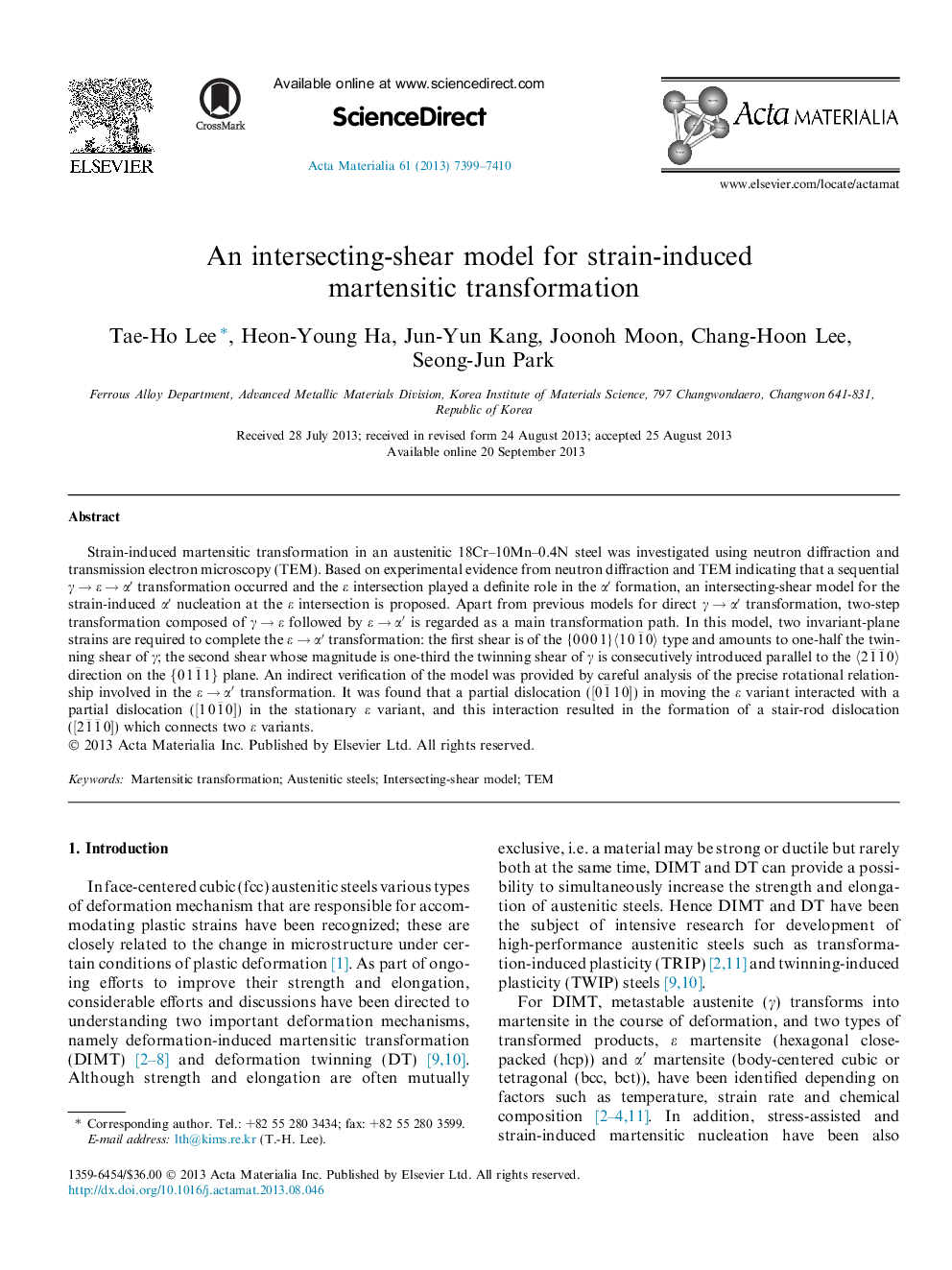| Article ID | Journal | Published Year | Pages | File Type |
|---|---|---|---|---|
| 10620249 | Acta Materialia | 2013 | 12 Pages |
Abstract
Strain-induced martensitic transformation in an austenitic 18Cr-10Mn-0.4N steel was investigated using neutron diffraction and transmission electron microscopy (TEM). Based on experimental evidence from neutron diffraction and TEM indicating that a sequential γ â ε â αⲠtransformation occurred and the ε intersection played a definite role in the αⲠformation, an intersecting-shear model for the strain-induced αⲠnucleation at the ε intersection is proposed. Apart from previous models for direct γ â αⲠtransformation, two-step transformation composed of γ â ε followed by ε â αⲠis regarded as a main transformation path. In this model, two invariant-plane strains are required to complete the ε â αⲠtransformation: the first shear is of the {0 0 0 1}ã101¯0ã type and amounts to one-half the twinning shear of γ; the second shear whose magnitude is one-third the twinning shear of γ is consecutively introduced parallel to the ã21¯1¯0ã direction on the {011¯1} plane. An indirect verification of the model was provided by careful analysis of the precise rotational relationship involved in the ε â αⲠtransformation. It was found that a partial dislocation ([01¯10]) in moving the ε variant interacted with a partial dislocation ([101¯0]) in the stationary ε variant, and this interaction resulted in the formation of a stair-rod dislocation ([21¯1¯0]) which connects two ε variants.
Related Topics
Physical Sciences and Engineering
Materials Science
Ceramics and Composites
Authors
Tae-Ho Lee, Heon-Young Ha, Jun-Yun Kang, Joonoh Moon, Chang-Hoon Lee, Seong-Jun Park,
